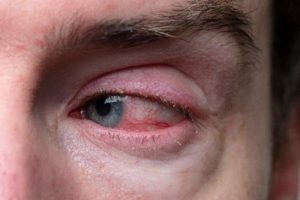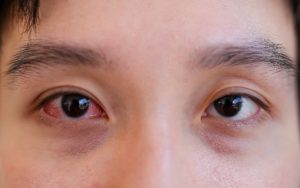Ocular Surface Disease In NYC
Ocular surface disease refers to a group of eye disorders that affect the surface of the eyes. They can impair vision and cause significant discomfort. At the Dry Eye and Ocular Surface Disease Clinic, Dr. Gregory Pamel and his associates have advanced training and technology to diagnose and treat ocular surface diseases to improve their patients’ quality of life.
Types of Ocular Surface Disease
Dry Eye
Dry eye, also known as keratoconjunctivitis sicca, is a common condition in which the eye cannot produce adequate lubrication for itself with natural tears. The experts at Pamel Vision & Laser Group have helped many patients to overcome their dry eye symptoms, thereby eliminating daily discomfort.
Blepharitis
 Having chronically inflamed eyelids (usually in both eyes) is known as blepharitis. This condition most often occurs when the oil glands next to the eyelashes cannot drain properly, though rosacea, dry eye and seborrheic dermatitis (dandruff) are also known causes. For most patients, prescription medication is the best way to relieve the symptoms.
Having chronically inflamed eyelids (usually in both eyes) is known as blepharitis. This condition most often occurs when the oil glands next to the eyelashes cannot drain properly, though rosacea, dry eye and seborrheic dermatitis (dandruff) are also known causes. For most patients, prescription medication is the best way to relieve the symptoms.
Meibomian Gland Dysfunction
The meibomian glands are responsible for secreting oil at the edges of the eyelids to prevent the eyes’ tears from drying out. Meibomian gland dysfunction is a disorder in which the glands emit insufficient or poor-quality oil, leading to eyelid inflammation. Doctors can provide helpful suggestions to relieve its symptoms, such as taking supplements, eyelid scrubs and applying warm compresses.
Conjunctivitis
 Better known as pink eye, this infection of the conjunctiva causes the white part of the eye to appear reddish. It is usually contracted virally, but can also be brought on by bacteria, pollen allergies or irritation from a foreign object. Because eyes can appear pink for a variety of reasons — and because it may be contagious — it is a good idea to have a doctor examine it.
Better known as pink eye, this infection of the conjunctiva causes the white part of the eye to appear reddish. It is usually contracted virally, but can also be brought on by bacteria, pollen allergies or irritation from a foreign object. Because eyes can appear pink for a variety of reasons — and because it may be contagious — it is a good idea to have a doctor examine it.
Ocular Allergies
Certain allergies can specifically irritate the conjunctiva, which is the membrane that covers both the eye and the inside of the eyelid. The most likely culprit is seasonal allergies caused by pollen or mold spores, but certain indoor factors like pet dander or dust mites may also cause irritation.
Ocular Rosacea
Ocular rosacea is marked by itchy redness around the eyes. Most patients with ocular rosacea have the skin condition on other areas of the face, as well. For some, ocular rosacea is a precursor to facial rosacea. Eye doctors can provide a list of medications and lifestyle tips to mitigate the side effects of ocular rosacea.
Chemical or Thermal Burns
A chemical burn to the eye requires prompt treatment to protect the eyesight and avoid long-term complications. It can cause serious pain and permanent damage.
A thermal burn occurs on the eyelid. A trained doctor can clean the burn and offer medicated eyedrops to avoid infection and lasting damage to the eye.
Symptoms of Ocular Surface Disease
Most ocular surface diseases share a set of symptoms, which includes:
- Redness
- Itchiness
- Blurry vision
- Watery eyes
- Burning sensation
- Pain or discomfort
- Light sensitivity
- Difficulty wearing contact lenses
Because of this high amount of overlap in symptoms, it is important to have a skilled eye doctor examine the eyes to identify the specific condition and recommend the appropriate course of treatment. A less experienced doctor may misdiagnose an ocular surface disease, which is why it is smart to trust Pamel Vision & Laser Group for treatment of these conditions.
To make an appointment at the Dry Eye and Ocular Surface Disease Clinic in New York City, please call (212) 355-2215.





